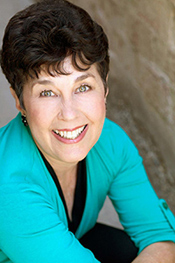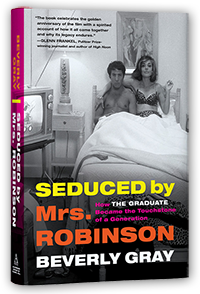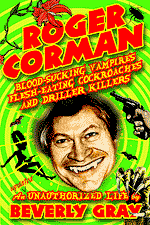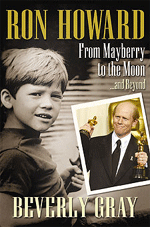Well, now the silly pageantry of Oscar night is over. I’d hoped for something remarkable and unexpected, but instead there were uncharming hosts and predictable (if often well-deserved) awards. What lingers most for me was the In Memoriam section of the evening, hailing the movie legends who left us last year.
How moving to see photos of director Arthur Penn and film editor Dede Allen. Not long ago, I interviewed them both regarding Bonnie and Clyde. Both the feisty Allen and the gentle, thoughtful Penn were a delight. I’m lucky to have spent those hours in their company. (That's my snapshot of Penn at his art-filled home, above.)
What made me saddest, though, was the moment when there flashed on screen a photo of director George Hickenlooper. George died suddenly, and much too young, at age 47. I considered George a colleague and a friend. Like me, he began with Roger Corman. In George’s case, there was a brief stint as production assistant on a juicy little thriller called The Drifter (1988). Then with Hearts of Darkness, his documentary on the making of Apocalypse Now, George started gaining major attention. His reputation built as he made feature films like The Man from Elysian Fields and last year’s Casino Jack, a telling of the Jack Abramoff saga (starring Kevin Spacey) that was released after his death.
But I’ll always remember George for his grace under pressure. It was a few days after L.A. had emerged from the bloody civil disturbances of 1992. Roger Corman, who loves movies “ripped from the headlines,” had summoned the press, announcing that his new film would lay bare all the causes and effects of those dark days. He introduced George as his writer-director. As the news media waited expectantly, Roger turned to George, saying, “Tell them about your movie.” George had come into the office for a simple business meeting, and there was as yet no story. But he had to say SOMETHING.
Noticing a video camera in someone’s hands, he had a moment of inspiration. His film, he announced, would follow the path of a video camera as it moved from hand to hand through the L.A. streets, picking up all the chaos that the riots engendered. The newsmen were impressed, and went away to file their stories. We on the Corman creative team went to work—until Roger suddenly lost interest in the riots as a film topic. Spielberg was shooting Jurassic Park, and we were redirected to a new project: Carnosaur.
Subscribe to:
Post Comments (Atom)








It's a shame -- I would have liked to see the movie that came out of Hickenlooper's video camera idea.
ReplyDeleteThe unfinished script (written by three young men of different backgrounds under George's guidance)was really promising, though of course the whole notion of capturing the true scope of the riots in a low-budget quickie film was a complete fantasy on Roger's part.
ReplyDeleteI am always amazed though, at how Mr. Corman does pull off this kind of movie now and again - War of the Satellites on screen 60 days after the launch of Sputnik; and some action/spy film he had made in Germany with footage of the Berlin Wall coming down. I'm kind of surprised this one didn't go through. Here's a weird parallel - the night those riots were going on over on the West Coast in the spring of 1992, I was on the East Coast shooting a riot scene for the movie Amos & Andrew (Nicolas Cage/Samuel L. Jackson) involving African American protestors outside Sam Jackson's house. It was eerie to go home from that and see the real thing happening 3000 miles away.
ReplyDeleteYes, this must have been quite shocking and disturbing. Roger occasionally claimed he had genuine footage taken on the scene of civil unrest and natural disasters. I assure you -- he didn't send a camera crew out in the thick of the L.A. riots, though of course he swore he had done exactly that. Even Roger wouldn't have put people's lives at risk under those circumstances! (By the way, Craig, my curiosity has gotten the better of me. What did you do on "Amos & Andrew"?)
ReplyDeleteI was only an extra in Amos & Andrew - playing the role of a TV cameraman covering the civil unrest outside Samuel L. Jackson's home in the movie. However, I gained enough connections from those three weeks of work to lead to 10 years in the industry as a production assistant and assistant director.
ReplyDelete